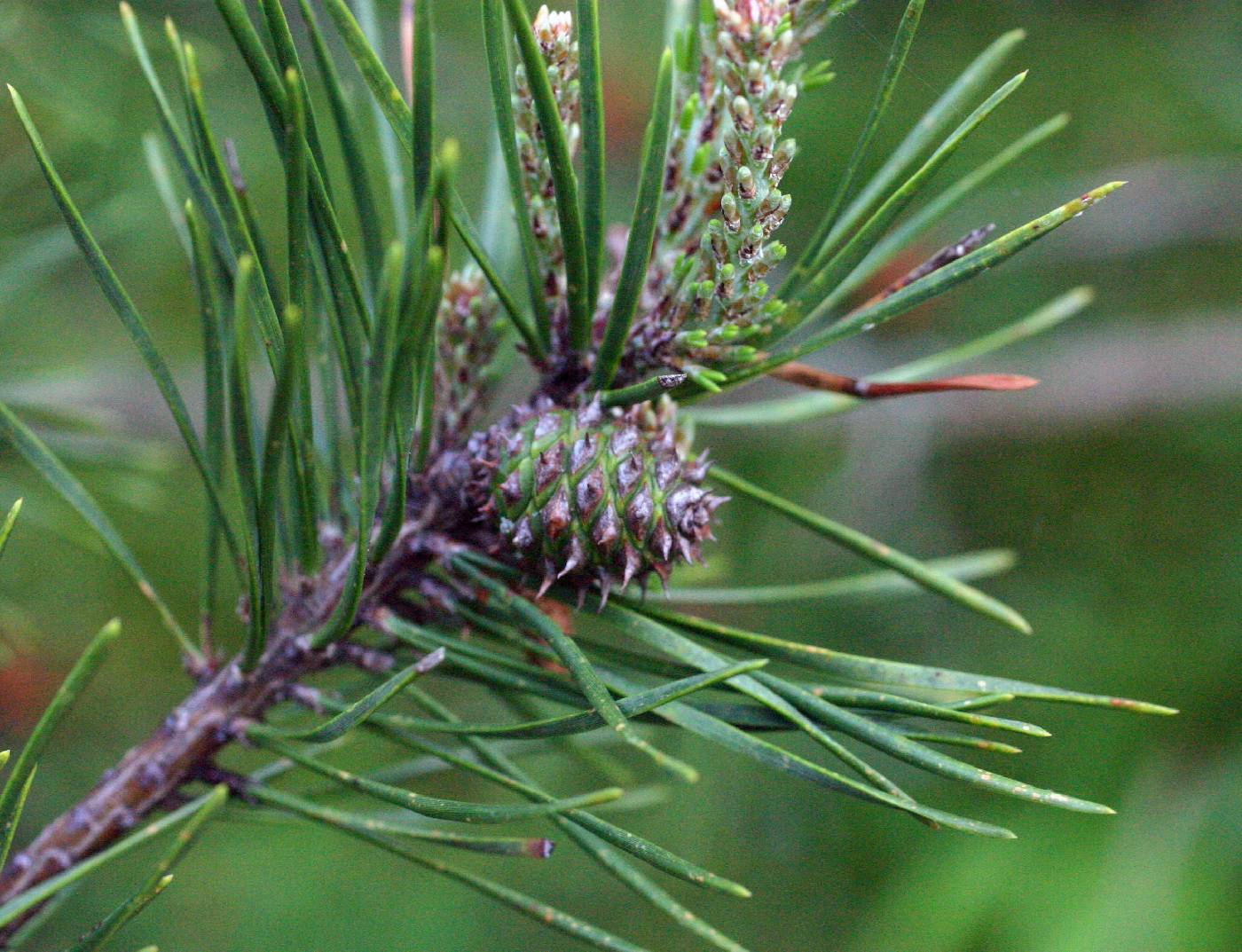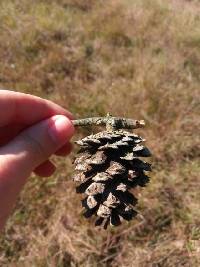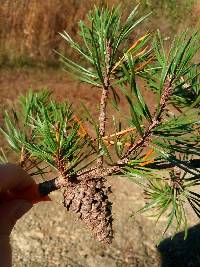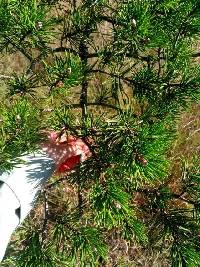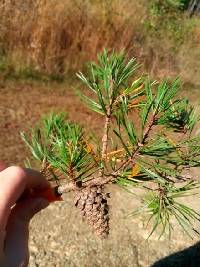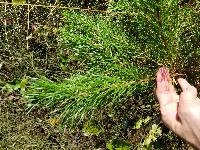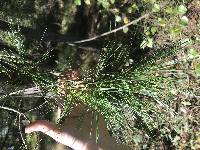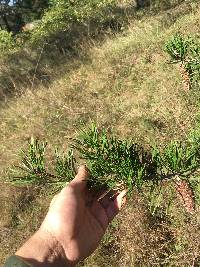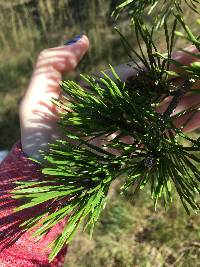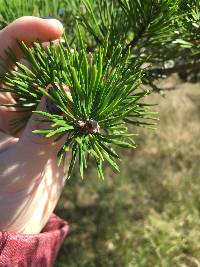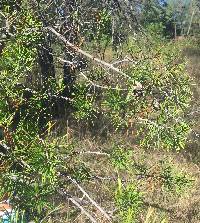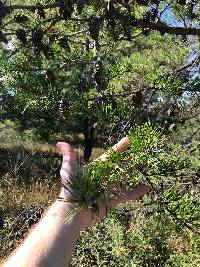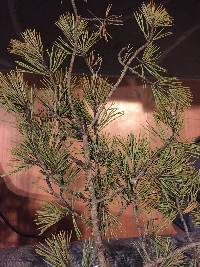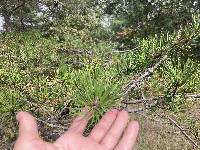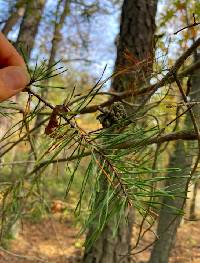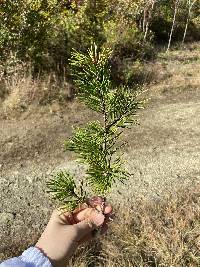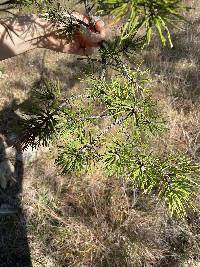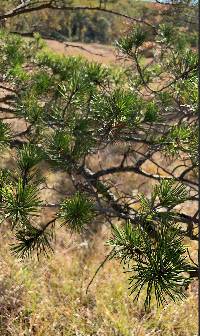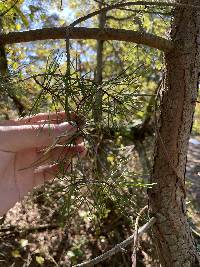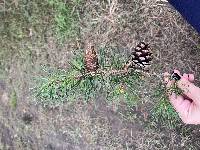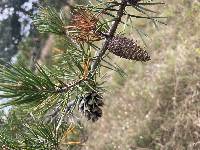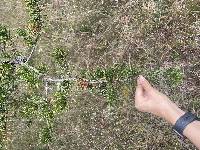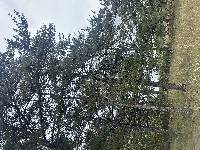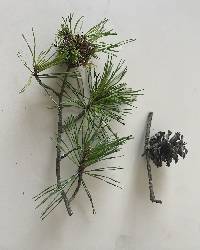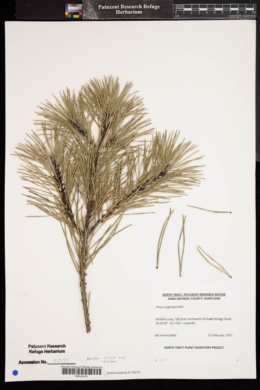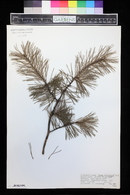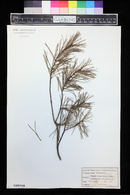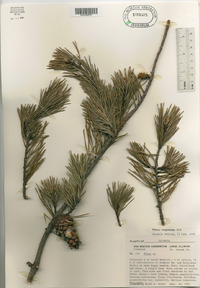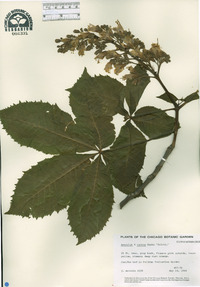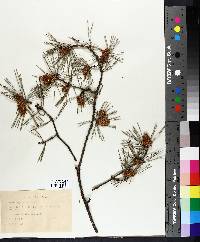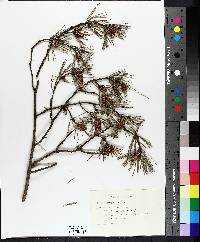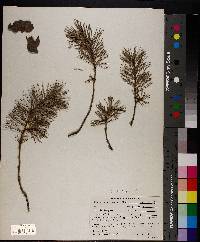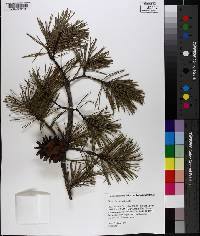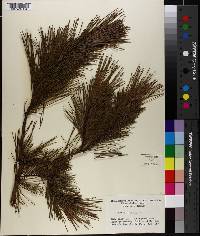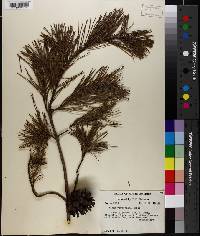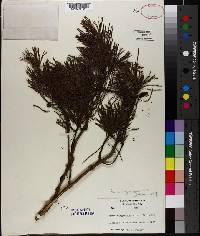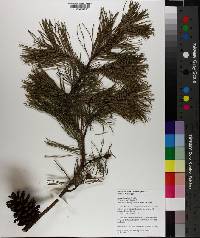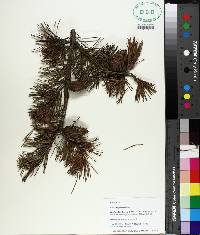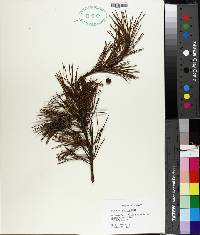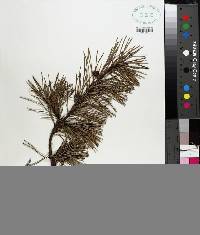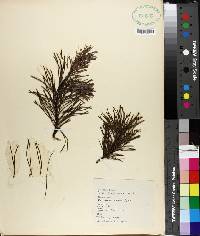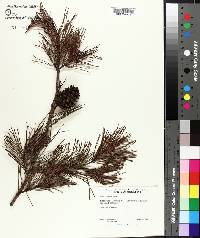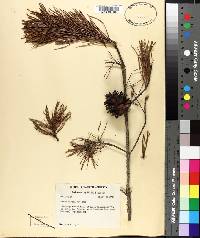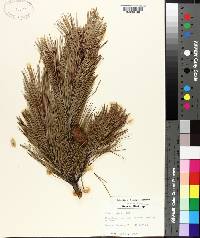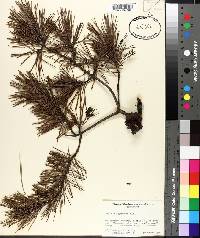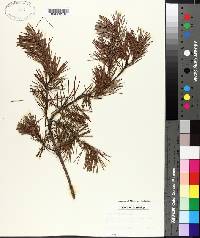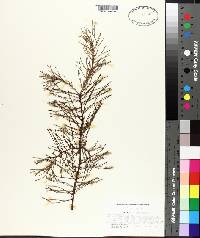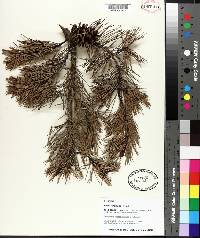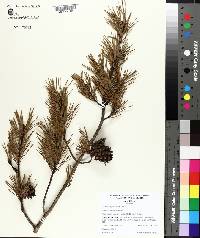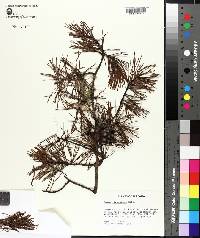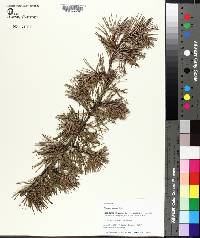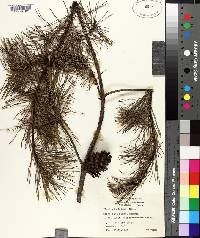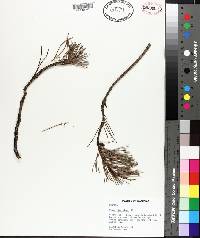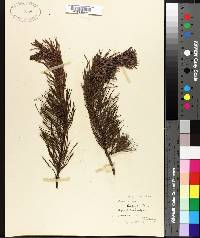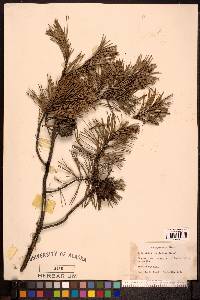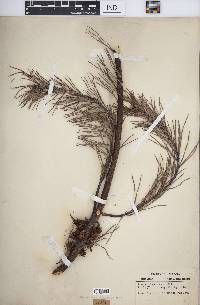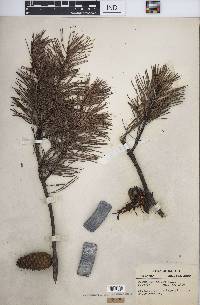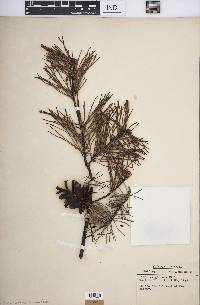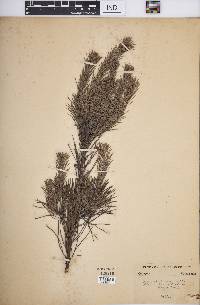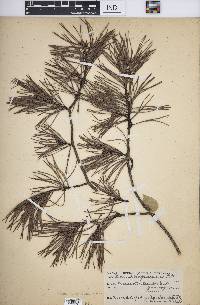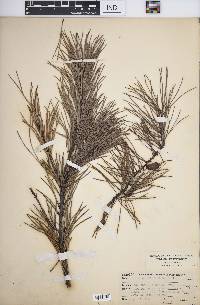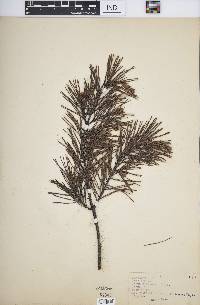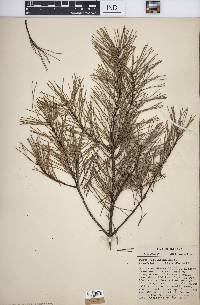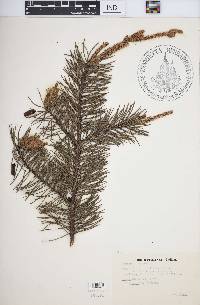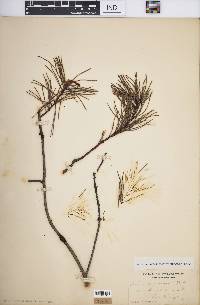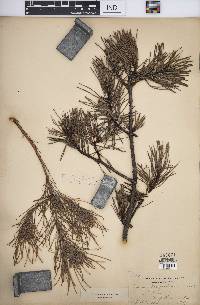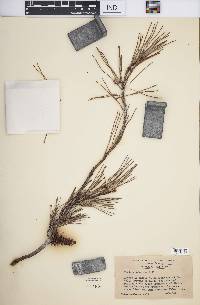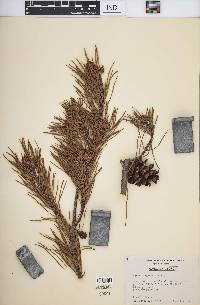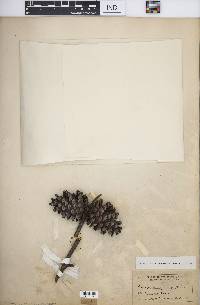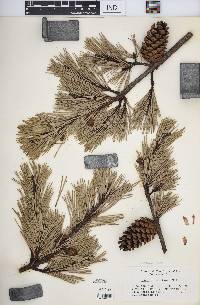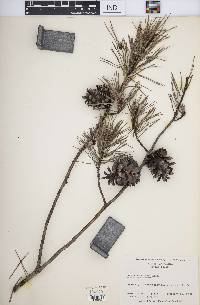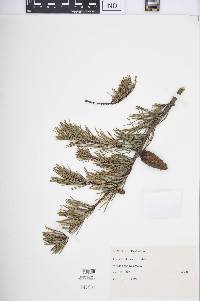Pinus virginiana
|
|
|
|
Family: Pinaceae
Virginia Pine
[Pinus inops, morePinus turbinata Bosc ex. Loudon] |
Trees to 18m; trunk to 0.5m diam., straight or contorted to erect or leaning; crown irregularly rounded or flattened. Bark gray-brown with irregular, scaly-plated ridges, on upper sections of trunk reddish, scaly. Branches spreading-ascending to spreading-descending; twigs slender, red- or purple-tinged, often glaucous, aging red-brown to gray, rough. Buds ovoid to cylindric, red-brown, 0.6--1cm, resinous or not resinous; scale margins white-fringed. Leaves 2 per fascicle, spreading or ascending, persisting 3--4 years, 2--8cm ´ 1--1.5mm, strongly twisted, deep to pale yellow-green, all surfaces with inconspicuous stomatal lines, margins serrulate, apex narrowly acute; sheath 0.4--1cm, base persistent. Pollen cones ellipsoid-cylindric, 10--20mm, red-brown or yellow. Seed cones maturing in 2 years, shedding seeds soon thereafter, persisting to 5 years, symmetric, lance-ovoid or lanceoloid before opening, ovoid when open, 3-- 7(--8)cm, dull red-brown, nearly sessile or on stalks to 1cm, scales rigid, with strong purple-red or purple-brown border on adaxial surface distally; apophyses slightly thickened, slightly elongate; umbo central, low-pyramidal, with slender, stiff prickle. Seeds compressed-obovoid, oblique apically; body 4--7mm, pale brown, mottled darker; wing narrow, to 20mm. 2 n =24. Dry uplands, sterile sandy or shaly barrens, old fields, and lower mountains; 0--900m; Ala., Del., Ga., Ind., Ky., Md., Miss., N.J., N.Y., N.C., Ohio, Pa., S.C., Tenn., Va., W.Va. Pinus virginiana is weedy and fire successional and often forms large stands. It is mostly too small and too profusely branched to be valued except as pulpwood.
Tree 10 - 18 m tall, trunk diameter 0.3 - 0.5 m Bark: grayish brown to reddish brown, thin, with small, scaly plates. Upper parts of trunk reddish and scaly. Twigs: slender, reddish, becoming reddish brown to gray with age, rough, often with a waxy coating (glaucous). Buds: reddish brown with white-fringed scales, less than 1 cm long, and egg-shaped to cylindrical. Form: irregular with an open, rounded to flat-topped crown. Pollen cones: orangish brown, 8 - 10 mm long, cylindrical, and crowded at or near the tips of branchlets. Needles: in bundles of two, shiny dark green, 4 - 8 cm long, sharp-pointed, toothed, stout, soft, flexible, twisted, and fragrant when crushed. Young seed cones: light green, 4 - 6 cm long, spherical, and on the lateral shoots of the previous year. Pollination between cones occurs in spring. Mature seed cones: woody, nearly stalkless, dark reddish brown, 3 - 7 cm long, and narrowly egg-shaped, remaining on the tree for several years. Scales thin, rigid, and armed with a slender, curved prickle. Seeds pale brown, mottled, 4 - 7 mm long, with wings up to 20 mm long. Similar species: The similar Pinus banksiana differs by having stiff, yellowish green needles and curved, closed seed cones that persist on the tree with open cones. Pinus pungens has slightly longer (5 - 10 cm) bluish green needles and heavy, egg-shaped seed cones bearing thick, prickled scales. Pinus sylvestris has distinctly orangish brown bark in the mid and upper trunk, as well as bluish green needles and egg-shaped seed cones. Also, the scales of its seed cones thicken at the apex into a four-sided, unarmed point. Habitat and ecology: Introduced from farther east or south. The only Chicago Region record for Pinus virginiana came from a specimen found in an open boggy meadow east of Lydick, St. Joseph County, Indiana. In southern Indiana, it freely escapes when planted. In its native habitat in the southeast, this species will grow in a variety of soils, but is most successful in well-drained clay, loam, or sandy soils. Occurence in the Chicago region: non-native Notes: The wood is used for pulp, firewood, and lumber. Etymology: Pinus is the Latin word for pine. Virginiana means "of or from the state of Virginia." Author: The Morton Arboretum Small tree, to 10 m, or seldom to 30 m, with long, horizontal branches; bark becoming dark red-brown; twigs purplish-brown to purplish-gray; winter buds less than 1 cm, very resinous, pale cinnamon-brown; lvs in 2's, persistent 3-4 years, dark green, soft and flexible, 4-8 cm נca 1 mm; cones dark red-brown, oblong-conic, 4-7 cm, opening at maturity but persisting for several years; apophysis elevated, the umbo strongly raised, with a straight, slender spine 1-3 mm; seeds 1.5-2 cm. Dry, sandy or sterile soil; s. N.Y. to s. Ind., s. to Ga., Ala., and ne. Miss. Gleason, Henry A. & Cronquist, Arthur J. 1991. Manual of vascular plants of northeastern United States and adjacent Canada. lxxv + 910 pp. ©The New York Botanical Garden. All rights reserved. Used by permission. From Flora of Indiana (1940) by Charles C. Deam This species is restricted to the crests of some of the ridges of knobstone in three counties. On some of the ridges it formed dense stands, but, on the whole, the species is not a strong competitor of the other species. It, however, promptly invades abandoned fields within and adjacent to the area of its natural distribution. Also when planted in a favorable habitat, it freely escapes. Notable examples of its escape are on the knobstone in northern Washington County, on the bluffs along Raccoon Creek in Owen County, and in Monroe County in a grove about 4 miles northwest of Ellettsville and about Weimer's Lake 2.5 miles west of Bloomington where it has been established for more than 50 years. A colony of about 3 acres in Orange County about 8 miles southeast of Paoli and just north of Danner's Chapel originated from a tree planted in the church yard. Some of the trees have already been cut for saw logs. R. M. Kriebel reports several large colonies in Lawrence County. He has traced the origin of each colony to a planted tree. In the knobstone area this species is truly "an old field" species. Within a 25-year observation I have seen it cover abandoned fields although it is a species difficult to transplant. …… Indiana Coefficient of Conservatism: C = 5 Wetland Indicator Status: N/A |
|
|
|

